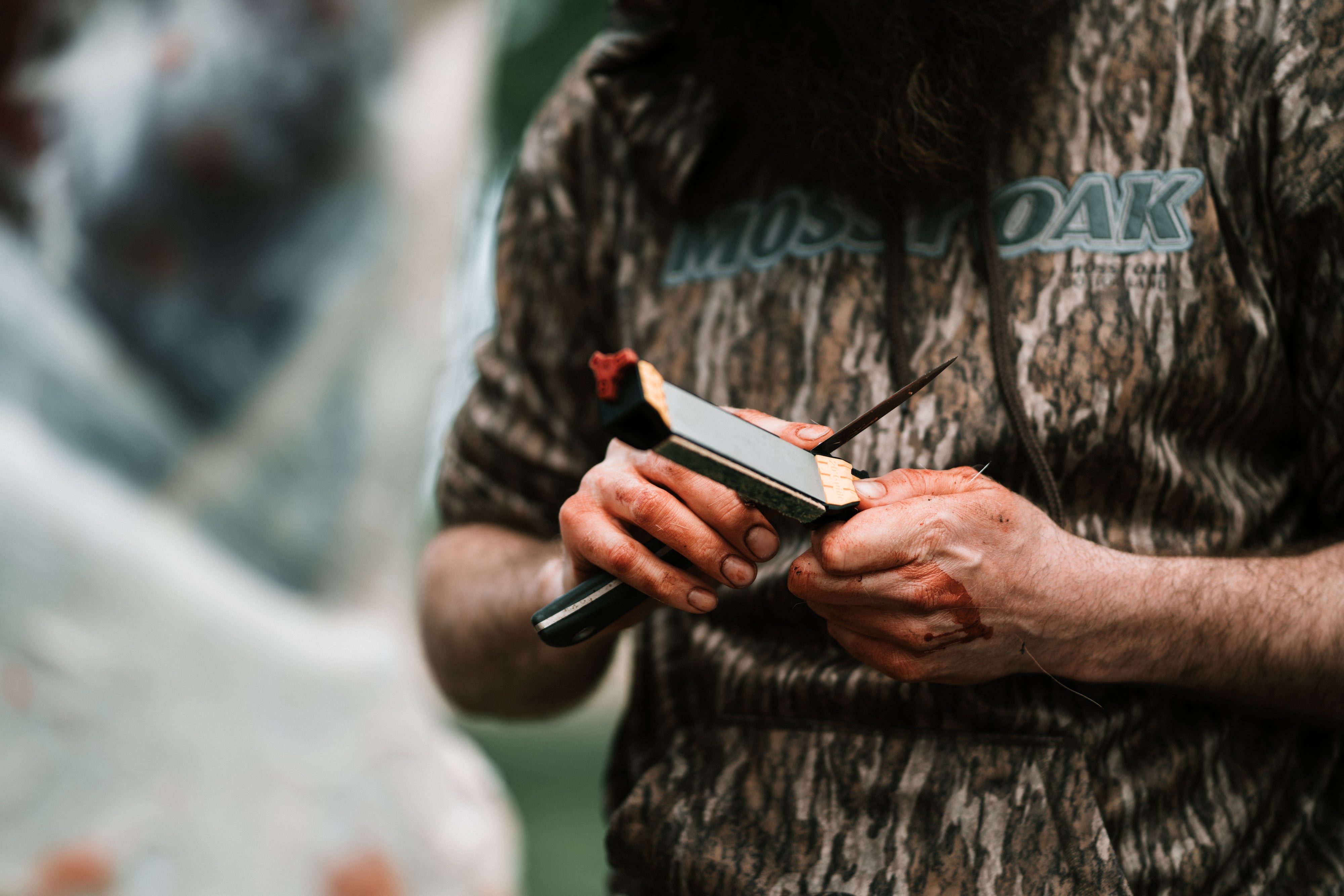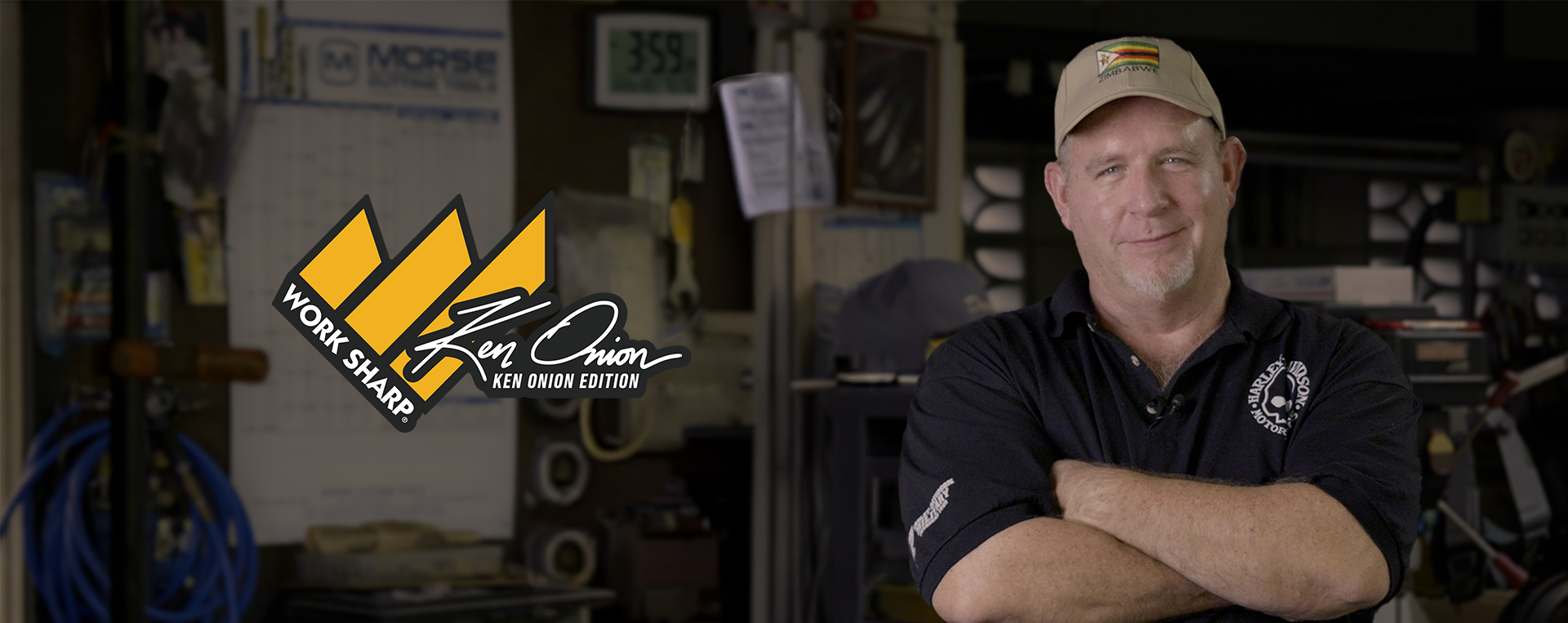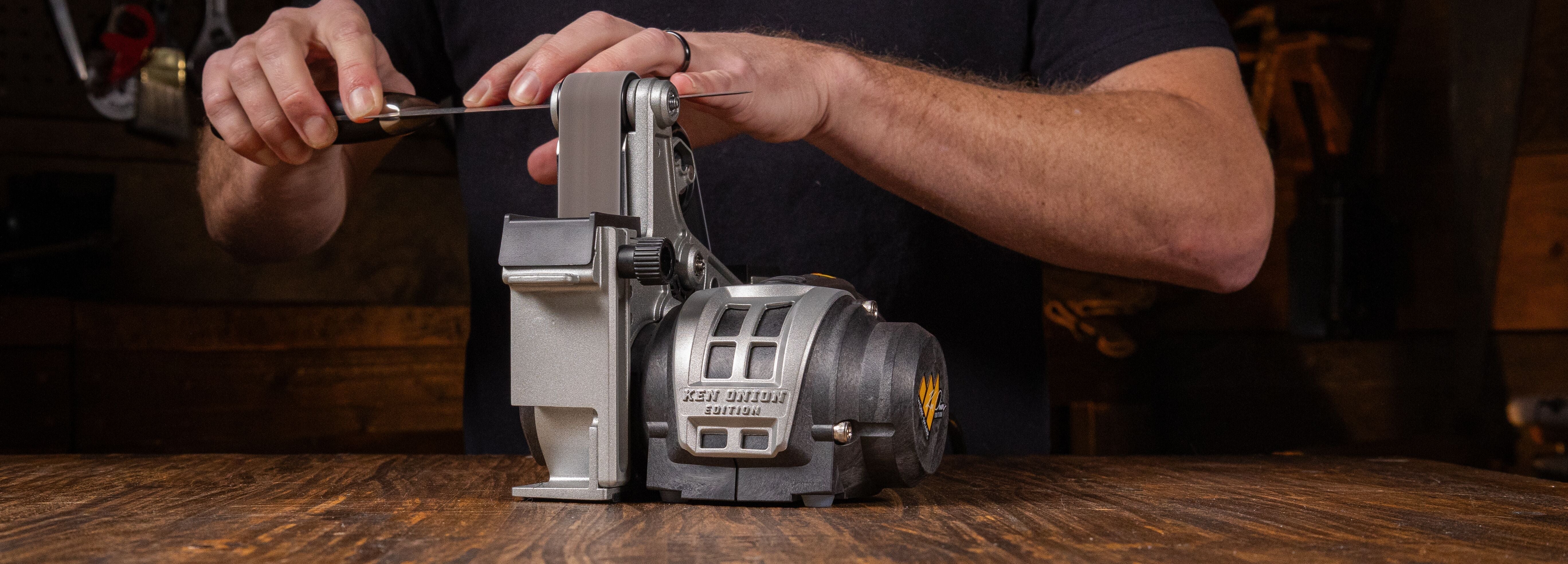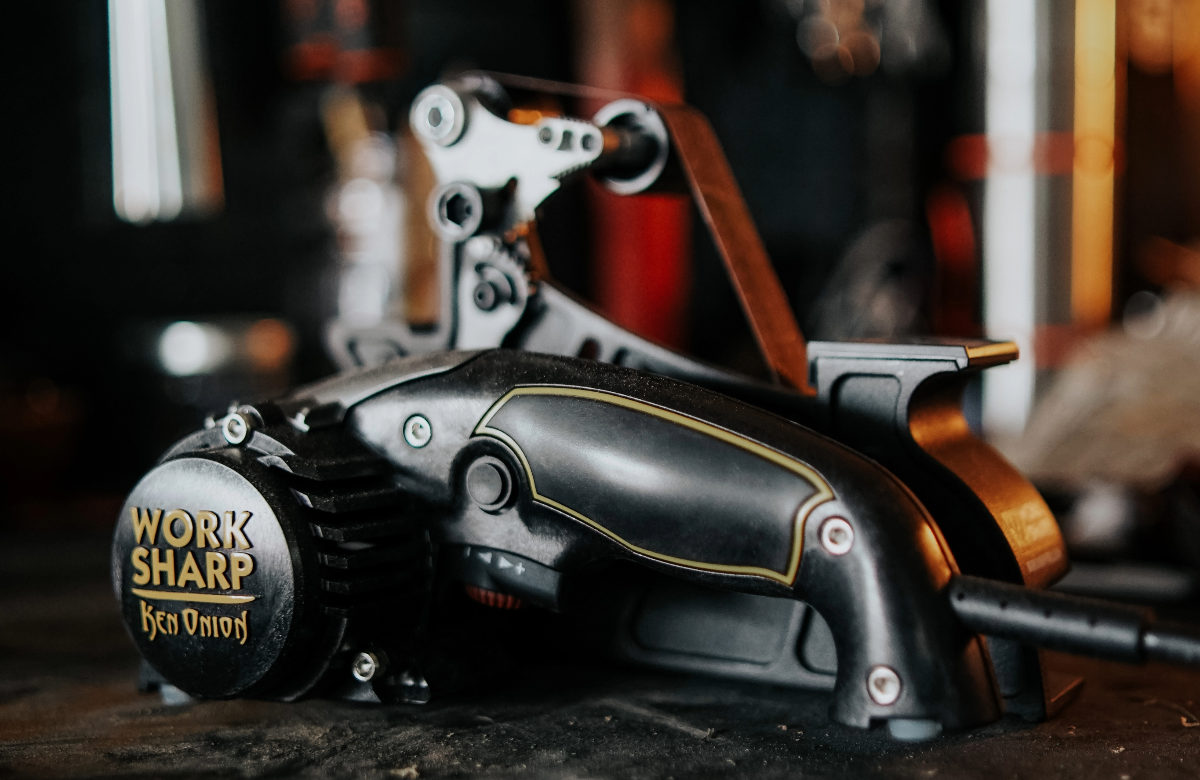In our first “Will it Sharpen” episode, we asked our viewers to throw some sharpening challenges to try to stump our crew. Watching the complete video will give you more insight and color into some of the decisions our sharpening experts need to make when tackling tricky sharpenings, but here are the highlights.
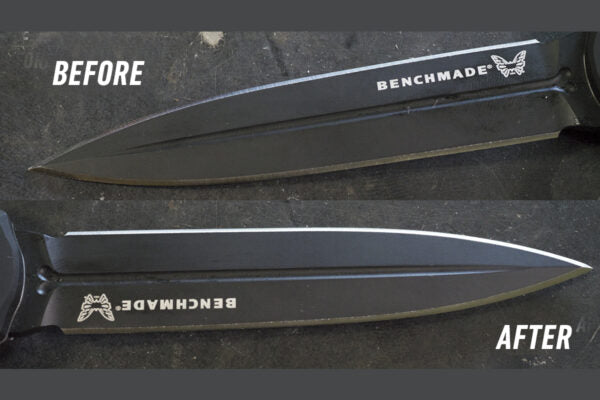
Spear Point (Double-Edged Dagger) with a Single-Bevel Chisel Grind
Found in both fixed and out-the-front formats, the single-bevel, double-edged Spear Point can be one of the trickier knives to sharpen correctly. When we sharpen at knife shows or sporting events, this blade type is the one that most intimidates new sharpeners (especially when handed a $400 Benchmade Infidel that is beyond dull because the owner was afraid to sharpen it). The two biggest points of focus are maintaining the symmetry of the blade and getting the point sharp enough to puncture paper.
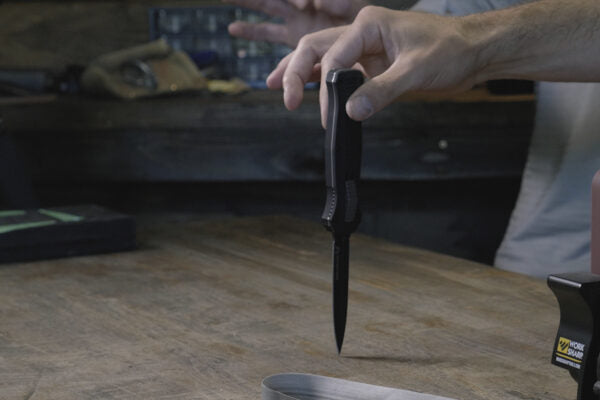
Knife sharpening expert Kyle Crawford recommends stepping away from guides for this blade type (when you are confident) and freehand the process for more control. Slow and steady wins the race, especially as you approach the tip.
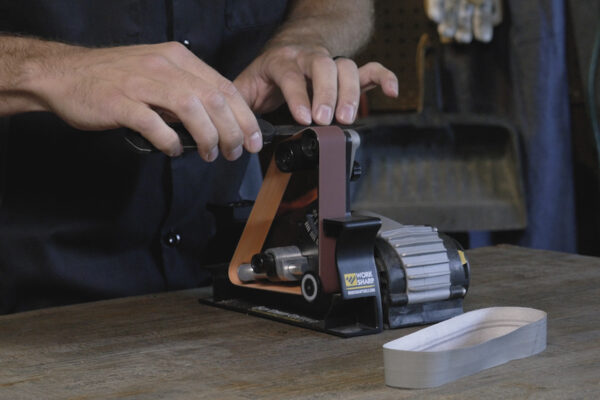
The single bevel means you will want to continue single stroke passes, going extremely light in areas where the burr can be felt, until the edge is sharp, the bevel matches the factory edge, and the tip is sharp enough to stick in a work bench without applying pressure.
One you complete the sharpening, a delicate honing is required to knock the burr off for a truly sharp edge. Because this is a single-bevel, you want to be as horizontal in your angle as possible on the non-beveled side to ensure you don’t introduce a second micro-bevel on that side.
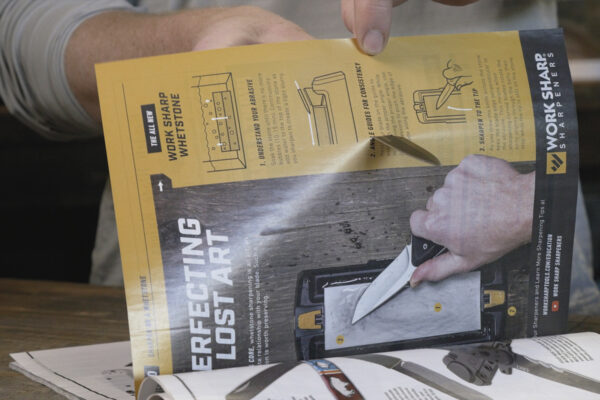
Sharpening a single-bevel Spear Point requires an intermediate level of knowledge and experience to do well, but Work Sharp does these all day long. Throw a bigger challenge at us in the comments in the YouTube video!


